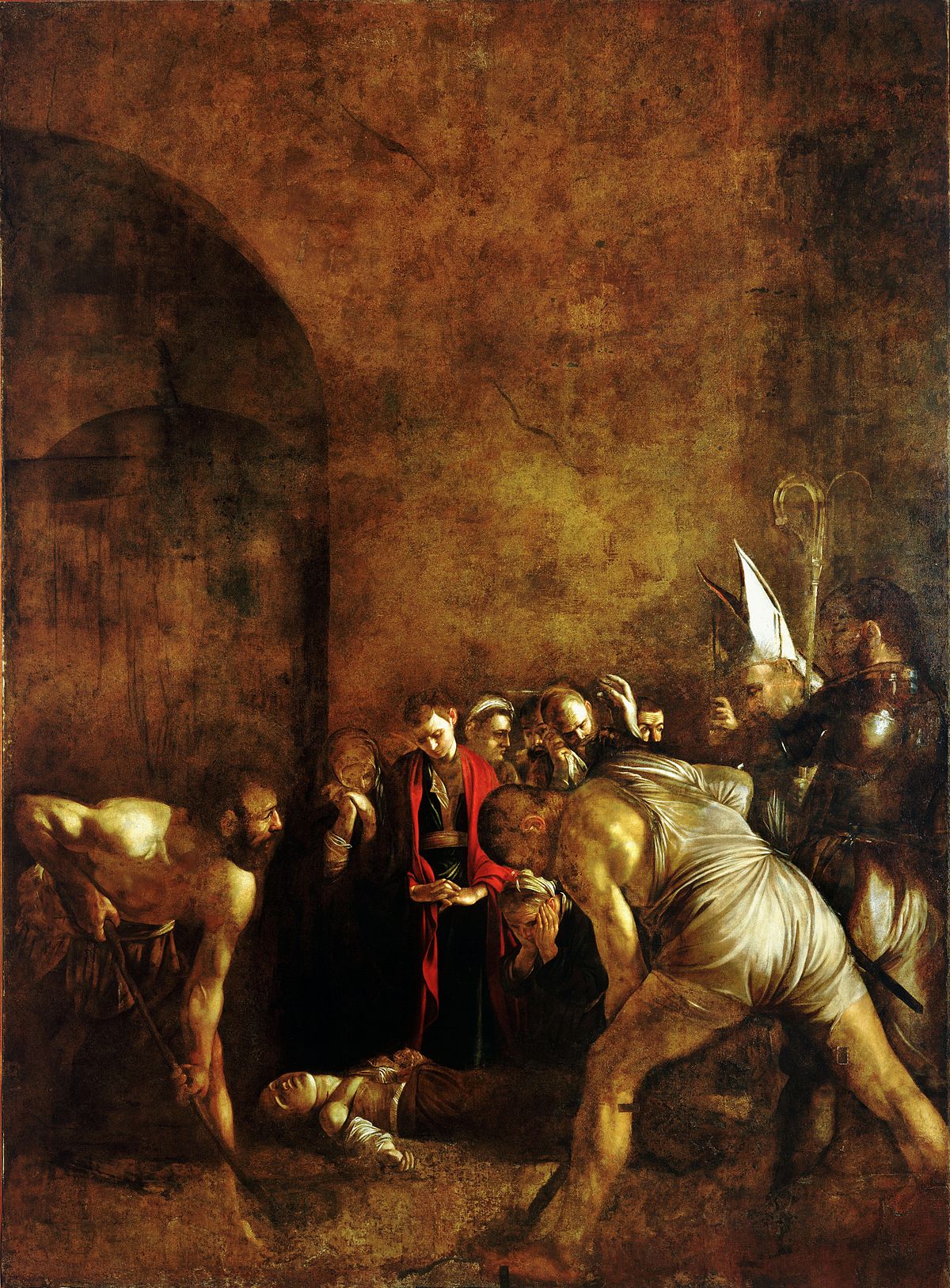Burial of Saint Lucy, 1608 by Caravaggio

Caravaggio was imprisoned in the Castel Sant' Angelo, Vittoriosa, Malta, for an unspecified offence but managed to escape by 6 October and soon found his way to Syracuse, where he met an
old friend of his Roman days, Mario Minniti who, according to Francesco Susinno's Lives of the Painters of Messina (1724), was instrumental in persuading the Senate of Syracuse to give
Caravaggio the commission for The Burial of St. Lucy. Lucy was an important Sicilian saint often associated with the gifts of the Holy Spirit and had been immortally characterized by
Dante as 'Lucy, the foe to every cruelty'.
In a composition which broke new ground, Caravaggio managed to convey her proverbial gentleness by a variety of means: the soft, generalized and still features of her pale face
seem in tune with the restrained but reverential sadness of the background mourners but also generate an added poignancy by contrast with the urgent movements of the colossal gravediggers,
whose rhythmic activity threatens to efface her image in a matter of seconds. As Friedlaender has noted the subject of her burial is an extremely unusual one; artists more frequently used
the explicitly sensational image of the saint holding her gouged-out eyes on a platter. But the choice of the burial as Caravaggio's theme enabled him to construct a composition in which
movement and stillness, physical power and spiritual presence interact with effective precision. The greatly increased space within which the figures are located has a similar effect to
that produced by The Beheading of St. John the Baptist, the void acting as an echo chamber to the strained emotions and brutal deeds of the protagonists. The picture was in very poor
condition prior to the latest restoration, which is still to be completed.
















